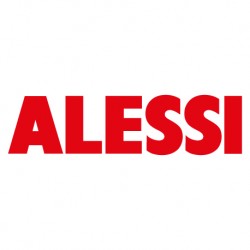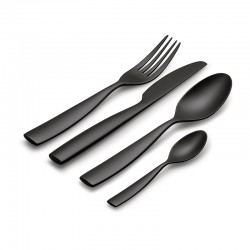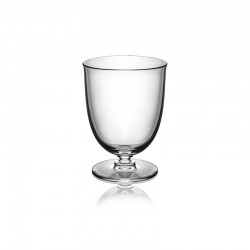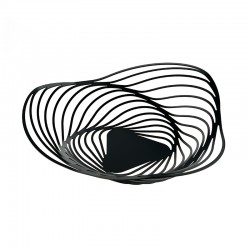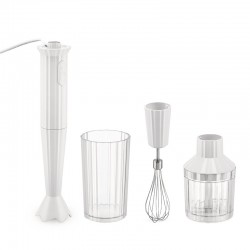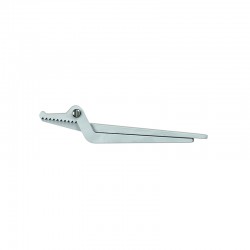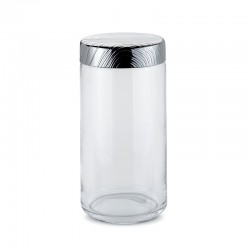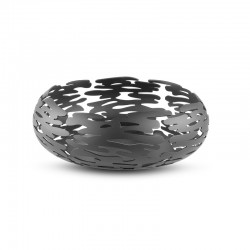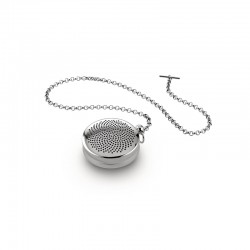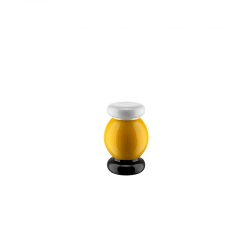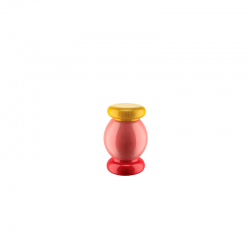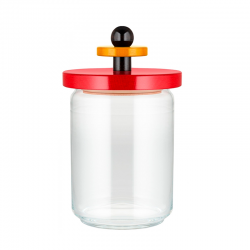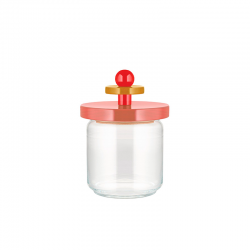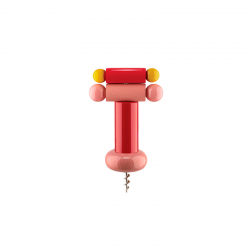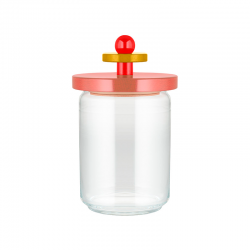Product successfully added to your shopping cart
There are 0 items in your cart. There is 1 item in your cart.
Last blog articles
List of products by manufacturer ALESSI
Alessi is the brand of kitchenware that has created some of the most outstanding objects of our daily day. Founded in 1921, Alessi has always stood out for the high quality of its products and the modern minimalism that adds a contemporary touch to any space. Alessi has remained at the forefront of design and innovation, and continues to work with the most important designers of today, and is currently considered the Italian Design Factories.
ALESSI
Alessi is the brand of kitchenware that has created some of the most outstanding objects of our daily day. Founded in 1921, Alessi has always stood out for the high quality of its products and the modern minimalism that adds a contemporary touch to any space. Alessi has remained at the forefront of design and innovation, and continues to work with the most important designers of today, and is currently considered the Italian Design Factories.
Cutlery Set 4 Pieces Black - Dressed en...
In stockCutlery Set 4 Pieces Black - Dressed en Plein Air. Dressed en plein air is a collection aimed at the outdoor world, which answers the need to eliminate disposable plastic. Designed by Marcel Wanders, it is an elegant complete set with with everything you need to serve and enjoy an outdoor lunch: on the terrace, in the garden, by the pool or on the grass....
17,00 €Pitcher 1L - Dressed en Plein Air White -...
In stockPitcher 1L - Dressed en Plein Air. Dressed en Plein Air is a collection aimed at the outdoor world, which answers the need to eliminate disposable plastic. Designed by Marcel Wanders, it is an elegant complete set with with everything you need to serve and enjoy an outdoor lunch: on the terrace, in the garden, by the pool or on the grass. Also ideal for...
57,99 €Set of 4 Glasses ø8cm - Dressed en Plein...
In stockSet of 4 Glasses ø8cm - Dressed en Plein Air. Dressed en Plein Air is a collection aimed at the outdoor world, which answers the need to eliminate disposable plastic. Designed by Marcel Wanders, it is an elegant complete set with with everything you need to serve and enjoy an outdoor lunch: on the terrace, in the garden, by the pool or on the grass. Also...
56,00 €Press Filter Coffee Maker Grey - Barkoffee...
In stockPress Filter Coffee Maker Grey - Barkoffee. Designed by Michel Boucquillon and Donia Maaoui. The designers drew their inspiration from their home, Casa Boucquillon: a place for experimentation, meditation and work where they live in sync with nature. The perforated pattern of the 'Bark' range recalls the bark on the trees around the house. The press...
130,00 €Centrepiece Ø43cm Black - Trinity - Alessi
In stockCentrepiece Ø43cm Black - Trinity. The dynamic formal rhythm of the Trinity citrus basket designed by Adam Cornish draws inspiration from the sinuous spiral structure of the shell of the Nautilus mollusc. The designer wanted to recreate the appearance of a natural element through modern industrial production processes.
125,00 €Hand Blender with Accessories White -...
In stockHand Blender with Accessories White - Plissé. The hand blender has two-speed settings, normal and turbo. It comes with a compatible container with a capacity of 700 ml. The container is made of high-quality PCTG plastic, which is extremely durable but lightweight. The container is suitable for both cold and hot drinks or food, as it has a heat resistance...
155,00 €Nutcracker - Sweetheart Silver - Alessi
In stockNutcracker - Sweetheart. An opportunistic apex predator, the Australian saltwater crocodile was hunted extensively until the 1970s when a law was passed to protect it, enabling the population to thrive once more. At nearly 6 meters in length, Sweetheart was the most famous of them all. This nutcracker is inspired by a late-Victorian model and is a tribute...
50,00 €Glass Jar with Hermetic Lid 1,5Lt - Veneer...
In stockGlass Jar with Hermetic Lid 1,5Lt - Veneer. A dreamy and distinctive decoration makes the Veneer glass jars some special pieces of furniture. The refined container has a glass body that permits to see the content.
50,00 €Doorstop Black - Dédé - Alessi
In stockDoorstop Black - Dédé. Designed by Philippe Starck in 1996 and originally produced in die-cast aluminium, the Dédé doorstop is a sculptural figure that gives life to one of the many anthropomorphic characters typical of the French author's poetic imagery. An unconscious world transformed into an expressive and functional object. The re-edition of Dédé is...
70,00 €Round Basket ø21cm Black - Barknest - Alessi
In stockRound Basket ø21cm Black - Barknest. The 'Bark' collection has now been joined by the 'Barknest' basket, an object that, in name and form, recalls a cosy nest with rounded walls for holding and safeguarding precious contents. The perforated pattern of the 'Bark' range recalls the bark on the trees around the house. The result is a strongly poetic...
85,01 €4-Piece Cutlery Set - Santiago Steel - Alessi
In stock4-Piece Cutlery Set - Santiago. The 'Santiago' Cutlery set designed by the English architect David Chipperfield. Attention to continuity of form makes the grip soft and the design startling (despite its apparent simplicity).
42,00 €Pasta Tester - Vabene - Alessi
In stockPasta Tester - Vabene. 'Vabene' is a practical and original utensil designed by Miriam Mirri to check if any pasta shape is done. 'Vabene' is also suitable for other types of food, such as vegetables or pulses. The delicate and feminine design of the designer is once again expressed in the theme of everyday objects, turning them into poetic presences that...
30,00 €Cutlery Set 4 Pieces - Mami Silver - Alessi
In stockCutlery Set 4 Pieces - Mami. Cutlery set with a spoon, fork, knife and coffee spoon in shiny 18/10 stainless steel. With the 'Mami' cutlery series, Stefano Giovannoni's great commitment and unmatched talent directly challenge the grand masters of design. Proof positive that he is on the Mount Olympus of design. For the 'super and popular' champion of...
36,00 €Tea Infuser - T-Timepiece - Alessi
In stockTea Infuser - T-Timepiece. Tea infuser, ideal for all types of tea and herbal tea. Designed for use in a cup. Measure out the amount of tea leaves to suit your taste. Easy to use thanks to the user-friendly opening. Closes securely to avoid tea leaves seeping out during brewing. Practical and easy to handle. The chain allows you to retrieve the tea...
30,00 €Spice Mill Black Red, Yellow And Black -...
In stockSpice Mill Black. Indispensable object in the kitchen and on the everyday table, this grinder is interpreted by Ettore Sottsass with his trademark use of overlapping coloured volumes. The grains, knots and differences in the wood make each piece unique and distinct from the others.
95,01 €Spice Mill Yellow Yellow, Black And White...
In stockSpice Mill Yellow. Indispensable object in the kitchen and on the everyday table, this grinder is interpreted by Ettore Sottsass with his trademark use of overlapping coloured volumes. The grains, knots and differences in the wood make each piece unique and distinct from the others.
95,01 €Spice Mill Pink Pink, Red And Yellow - Alessi
In stockSpice Mill Pink. Indispensable object in the kitchen and on the everyday table, this grinder is interpreted by Ettore Sottsass with his trademark use of overlapping coloured volumes. The grains, knots and differences in the wood make each piece unique and distinct from the others.
95,01 €Kitchen Box 1L Red Red, Yellow And Black -...
In stockKitchen Box 1L Red. Ettore Sottsass reinterprets a kitchen classic with his hallmark style of overlapping coloured volumes. The ideal jar for storing dry foods such as rice, pasta, biscuits, or powders such as sugar, salt and coffee. The glass body and the hermetic closing keep the flavour and aroma of the products intact.
50,00 €Kitchen Box 750ml Pink Pink, Red And...
In stockKitchen Box 750ml Pink. Ettore Sottsass reinterprets a kitchen classic with his hallmark style of overlapping coloured volumes. The ideal jar for storing dry foods such as rice, pasta, biscuits, or powders such as sugar, salt and coffee. The glass body and the hermetic closing keep the flavour and aroma of the products intact.
47,99 €Corkscrew 18cm Pink Pink, Red And Yellow -...
In stockCorkscrew 18cm Pink. The corkscrew according to Ettore Sottsass: a tool both effective and emotional. Easy to use: the designed volumes reveal an ergonomic shape that is comfortable to hold. Coloured with water-based and totally solvent-free paints that are sustainable for the environment and not harmful to human health.
95,01 €Kitchen Box 1L Pink Pink, Red And Yellow -...
In stockKitchen Box 1L Pink. Ettore Sottsass reinterprets a kitchen classic with his hallmark style of overlapping coloured volumes. The ideal jar for storing dry foods such as rice, pasta, biscuits, or powders such as sugar, salt and coffee. The glass body and the hermetic closing keep the flavour and aroma of the products intact.
50,00 €

